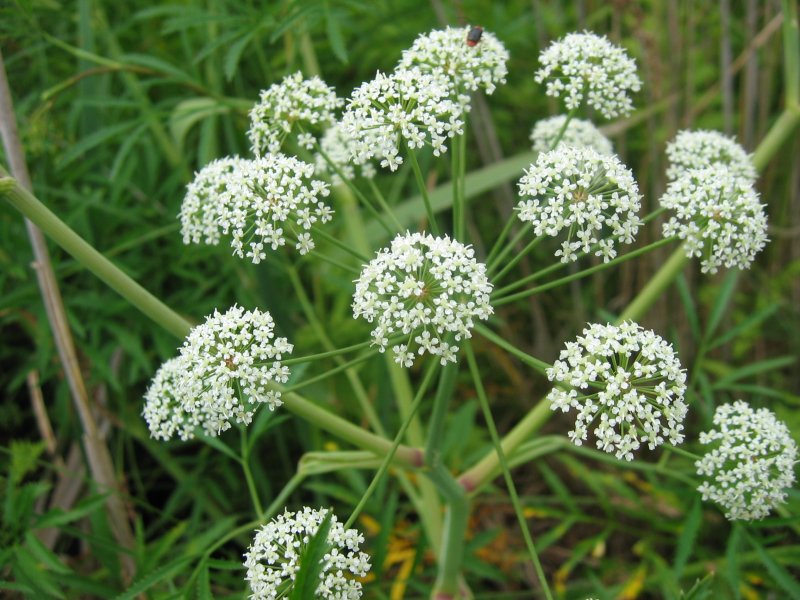Look but DON'T TOUCH: 8 TOXIC plants in Canadian gardens
Digital Reporter
Friday, July 20, 2018, 11:05 AM - They’re neat to look at but they can pack a punch. Here are eight plants found in Canada that you'll want to admire from a distance.
(COTTAGE REPORT: UNOFFICIAL START TO SUMMER IS AROUND THE CORNER. CHECK OUT OUR COTTAGE REPORT & START PLANNING!)
1. BLOODROOT
This seemingly innocent flower produces a toxic, red sap that can kill animals when ingested. When the sap is applied to skin, it can cause severe tissue damage.
Native from Nova Scotia to Manitoba, this flower is a member of the poppy family.
It blooms in the spring and prefers moist soil and partial shade.
2. AMERICAN POKEWEED

This perennial plant can climb three metres in height. Found in parts of the U.S. and native to Ontario and Quebec, this plant has berries that serve as a tasty treat for local few bird species. Humans can eat the berries when cooked, but eating the roots, leaves and stems can cause convulsions, seizures and vomiting.
According to cancer.org, this plant contains a protein that may be able to reduce tumors in mice.
3. POISON IVY

The leaves of this plant are coated in an oil that can cause a painful rash or fever to develop anywhere from 12 hours to two days after contact.
Found across southern Canada, it prefers rocky areas and can spread quickly.
Poison ivy can be identified by its three leaflets, which can have jagged or round edges, and it is most potent in the spring.
4. WATER HEMLOCK

Found across Canada and the U.S., the water hemlock is a highly toxic plant that's part of the parsley family.
Arguably one of the most poisonous plants on the continent, it contains the toxin cicutoxin, which acts as a convulsant that can lead to seizures and death.
Only a small amount needs to be ingested to make a human or large animal sick.
5. GIANT HOGWEED

Though not native to Canada, the giant hogweed has been introduced and can be found in B.C., Ontario, Quebec and parts of Atlantic Canada.
It can grow up to 2 metres in height and looks like a gigantic version of Queen Anne's lace.
Health officials have called the invasive species a 'public health hazard'.
If you encounter this plant in the wild, it's best to stay away.
The sap can cause burning and blistering. If it makes contact with the eyes it can cause temporary or permanent blindness.
6. WINTERBERRY
Found in Ontario, Quebec and parts of Atlantic Canada, the seeds, bark, leaves and berries of this plant can cause nausea and low blood pressure when ingested.
7. DAFFODIL

In May, 2008 a group of school children in Suffolk, England fell ill after a daffodil bulb was added to a soup. The bulbs are commonly mistaken for onions, which can lead to cases of accidental poisoning.
Symptoms of daffodil poisoning include nausea, dizziness, and vomiting.
The daffodil has been introduced to Canada and can be found growing in parts of B.C., Ontario, Quebec, and Atlantic Canada.
8. AMERICAN NIGHTSHADE

This plant was introduced to Canada and can be found growing in B.C. and Manitoba.
The berries this plant produces can cause death if ingested, with the level of toxicity varying depending on the genetic strain of the plant and type of soil it's growing in.



